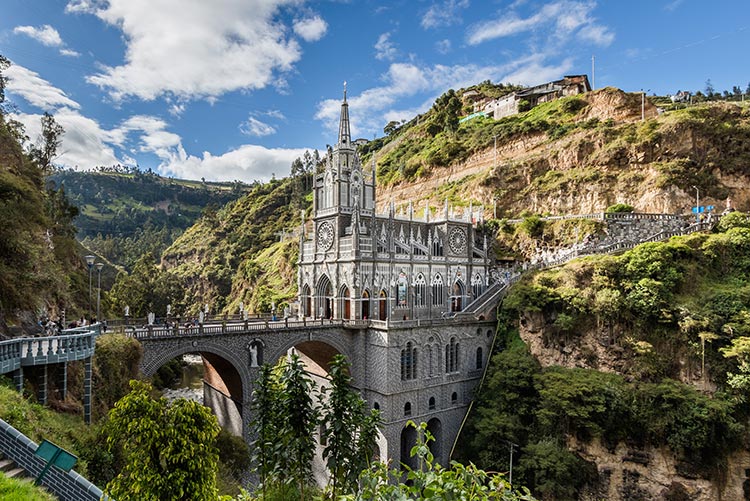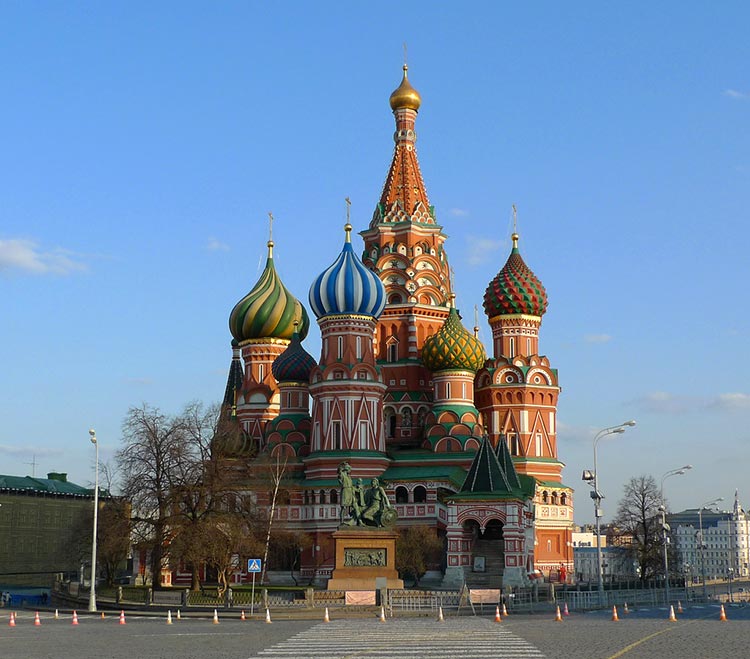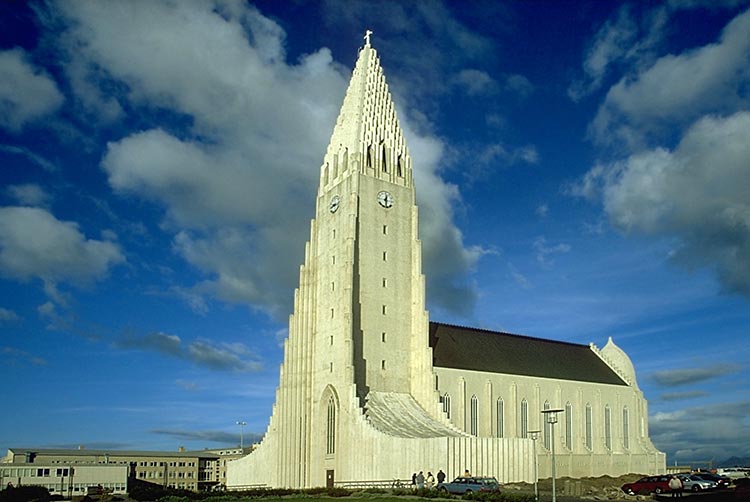
Christian Philosophy & Culture
The Christian Church: Church & Community (Part 4 of 4)
The very meaning of the church, its raison d' ê tre , demands that it should be different from all other buildings, with a character of its own. This specific character corresponds to and expresses the specific nature of the Church. According to the words of Jesus Christ Himself, His Church is a Kingdom "which is not of this world". Yet the Church lives in the world and for the world, for its salvation. This is the purpose of her existence. Since she is a 'Kingdom which is not of this world' she has her own nature, which is distinct from that of the world. She cannot accomplish her purpose unless she remains faithful to her own specific nature, faithful to herself. Her way of life, her means of action, her methods are other than those of the world. Her art, especially, is not like the art of the world: it expresses truths of a different order and pursues different aims. If it mixes with profane art, it no longer corresponds to what it must express, nor to the aim it is serving. In other words, it no longer fulfils its function, and so compromises the Church's action and saving mission in the world. This is why it is so important to keep the specific character of the Church constantly in mind in all the branches of ecclesiastical activity, especially in the realm of art, which has the capacity to act directly and powerfully on the human soul.
 Above: Las Lajas Sanctuary, Colombia
Above: Las Lajas Sanctuary, Colombia
From the beginning the Christian Church gave its temples and its worship forms appropriate to their nature and purpose. She established the interior aspect of churches, the character of the sacred images, the singing, the clergy's vestments, etc. Together church and Liturgy form a harmonious whole, a perfect liturgical unity and fullness. This unity, this convergence towards the same end, presupposes that each of the elements forming part of the divine service must above all be subordinate to the general meaning of the church, and therefore all desire to give them a role or value of their own must be renounced. The painting and singing cease to be separate forms of art, independent of the others. Instead, they become a variety of forms which express, each in its own way, the general meaning of the church, the transfigured world, a prefiguration of the peace to come. Subordination is the only way by which each art, as part of a harmonious whole, is able to attain its full significance and become increasingly rich in an ever new meaning. United by this common aim, these different elements which enter into worship fulfil the "unity in diversity" and the "richness in unity" which express, in general and in each detail, the principle of catholicity of the Orthodox Church, its " sobornost ". This is precisely what creates the beauty of the church, which is quite different from the beauty of the world, a beauty which truly reflects the harmony of the age to come. We may take as an illustration the description of the conversion of the holy Prince Vladimir, by a Russian chronicler. When the messengers whom he had ordered to compare various religions came back from Constantinople, they told him that when they were present at the Liturgy at St. Sophia, they did not know whether they were on earth or in heaven. Even if this is only a legend, it expresses perfectly the Orthodox meaning of the Church and her worship, the Orthodox sense of beauty. The imperial palace was also beautiful, but it did not impress the messengers of St. Vladimir.
 Above: Saint Basil's Cathedral, Russia
Above: Saint Basil's Cathedral, Russia
There is nothing new in all this. It is obvious to anyone who lives in the Church. But as soon as one is separated from it, as soon as one begins to get involved in the things of this world, one loses the way of salvation based on tradition. But the Church never loses it, and reminds us constantly of it in the Liturgy, in the voice of the Councils, in the bishops, or simply in the faithful. In this way His Holiness Alexis, Patriarch of Moscow, reminded us of tradition when he wrote in his Easter message to the clergy in Moscow in 1947: "In a church, everything is different from the things we see constantly around us and in our homes. The pictures are not like those we see at home; the walls are painted with holy images; everything is resplendent; everything lifts up the spirit and takes it away from the usual thoughts and impressions of this world. And whenever we see something there which falls short of the greatness and the meaning of the Church, it shocks the eye. The holy Fathers who established not only the worship but also the exterior and interior aspects of the church, planned and ordered everything to create a special state of mind in the faithful, so that nothing should hinder their progress towards heaven, towards God, towards the heavenly world of which a church must be the reflection. If in hospitals, which treat the diseases of the body, everything is arranged to make the surroundings conducive to the patient's return to health, what great care must be taken to order everything in a spiritual hospital, a church of God! (12)
In his message, His Holiness pays special attention to singing, which, like the pictorial image, is one of the important problems of our worship. "The performance of liturgical singing in the shrill manner of worldly romantic songs or passionate opera arias deprives the worshippers of all possibility not only of concentrating, but even of understanding the content and meaning of what is sung" (13). These romantic songs and arias can be very beautiful in themselves. But in church this type of beauty is not constructive; it is even destructive, because it hinders the understanding of the content and the meaning of what is sung. All one can say is that it simply has no meaning because it does not fulfill its function in church. One can say the same thing where painting is concerned. Naturally, each of us is used to certain styles and has his own preferences. But we must know how to go beyond them, to do without them in church. Besides, the Church does not exist to satisfy the habits and tastes of this or that person, it exists to direct them to salvation in the Church.
 Above: Hallgrímskirkja, church of Hallgrímur, Iceland
Above: Hallgrímskirkja, church of Hallgrímur, Iceland
The symbolism of the church shows us the basis on which is founded the language of worship, especially of the icon-a language which we have forgotten. All the sayings of the Fathers and writers of the Church whom we have mentioned are only some expressions of what the Church has lived on since its beginning, and what it will live on until the Second Coming of its Head.
A characteristic feature of the New Testament is that it gives us a direct image. This New Testament image will disappear only at the coming of the reality which it prefigures, the Kingdom of God . But as long as we are still on the way, as long as the Church is still only building this Kingdom to come, we will remain in the realm of the image. The Church shows us through the intermediary of the image the way towards our goal.
We cannot share in the building of the Kingdom of God, and we cannot say consciously "Thy Kingdom come", unless we have some indication of what that Kingdom will be. But the symbolism of an Orthodox church, and in particular of the icon, is a reflection, albeit a dim one, but still a true reflection, of the glory of the age to come. In the words of St. Simeon the New Theologian, " We can know God in the same way a man can see a limitless ocean when he is standing by the shore with a candle, during the night. Do you think he can see very much? Nothing much, scarcely anything. And yet, he can see the water well, he knows that in front of him is the ocean, and that this ocean is enormous and that he cannot contain it all in his gaze. So it is with our knowledge of God "(14).


